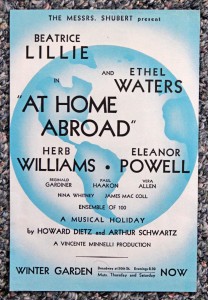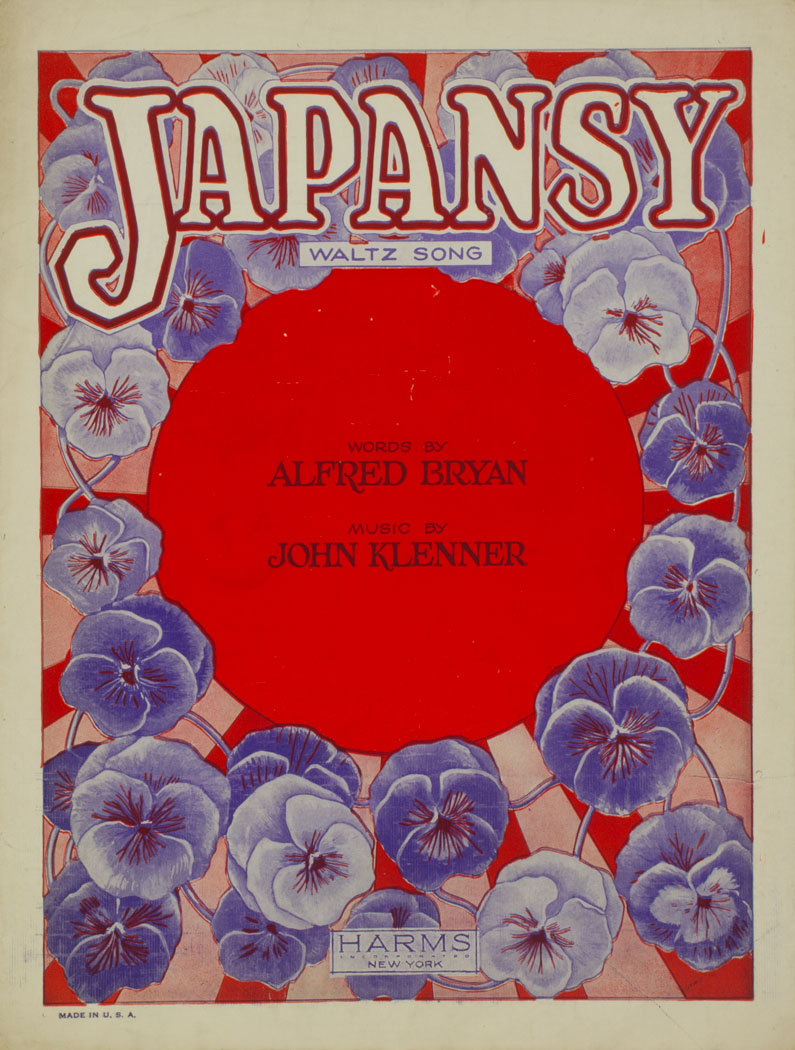
Handbill for the 1935 musical revue “At Home Abroad” featuring Beatrice Lillie singing “Get Yourself a Geisha”
Recordings of Yama-san (1902), Suki San (1917), When the Cherry Trees are Blooming in Japan (1918), and Poor Little Butterfly is a Fly Girl Now (1919) have been added to the Sheet Music gallery (the links will take you to the gallery page where these objects are located).
A couple of weeks ago my brother, who has an extensive knowledge of Broadway stage musicals, reminded me of song from our past, Get Yourself a Geisha, from the 1935 revue At Home Abroad (words & music by Howard Dietz and Arthur Schwartz, a Vincente Minnelli production, presented by the Schuberts). We discovered it on vinyl back in the late 1970s or early 1980s, on one of the wonderful Smithsonian albums of vintage recordings. I admit we played it regularly with much glee. It is as politically incorrect as the title implies, but it’s hard not to be gleeful when listening to the inimitable Beatrice Lillie, especially her refrain “Ho-ku-sai Hiroshika Hoku-sai!” (It is an earworm, be forewarned.) According to one review (Time, 30 September 1935, “The Theatre: New Plays in Manhattan”), the plot–such as it is–consists of a “musical holiday” taken by a couple “so bored with the ubiquitousness of such U.S. personages as John D. Rockefeller and Mrs. Franklin D. Roosevelt that they flee on a world tour . . . .” There are 25 musical numbers, mostly by Lillie but also by Ethel Waters (Hottentot Potentate, another remarkably culturally insensitive but effective earworm, Loadin’ Time, and The Steamboat Whistle). It also featured Eleanor Powell, Herb Williams, Eddie Foy, Jr. (“who can at least imitate a seal better than anyone else in the U.S. theatre”) and “British newcomer” Reginald Gardiner imitating trains, dirigibles, and steamships. I don’t know how this memory escaped me in building Re-Envisioning Japan, as the revue encapsulates the transglobal tourism boom of the mid-1930s that helped inspire this project. Then again, perhaps it planted a seed in my subconscious mind, dormant until now. Now I have the CD (original cast recording, Aei Records/Record Depot, 2006), a copy of the original playbill, and a handbill (left) appropriately illustrated. Thanks to this project, I am re-engaging with the song, and the musical, in a new light.


 made over the course of several sessions this past spring at the home of
made over the course of several sessions this past spring at the home of